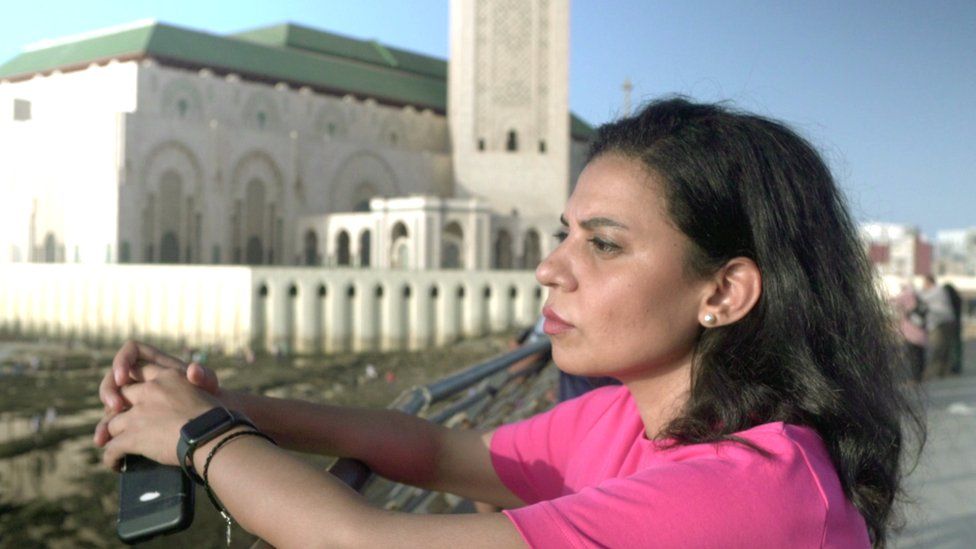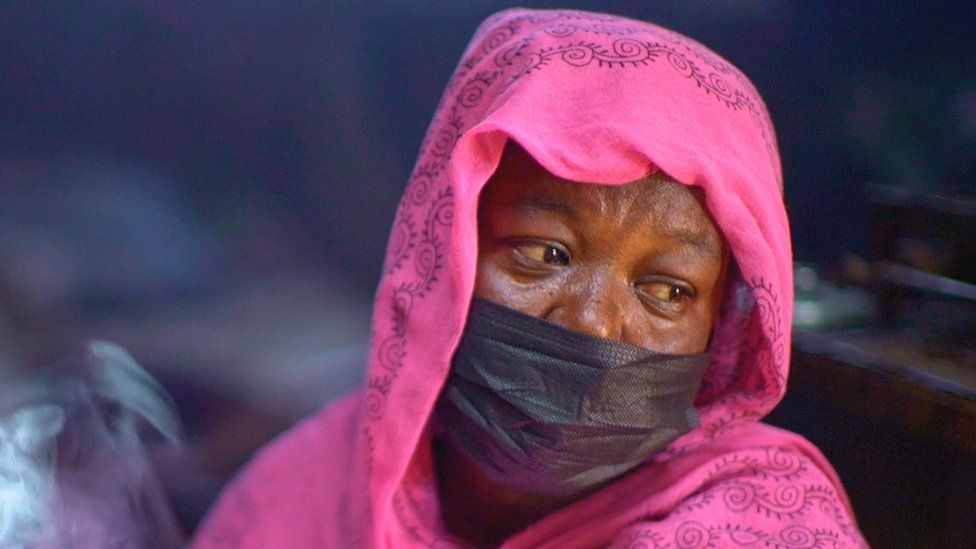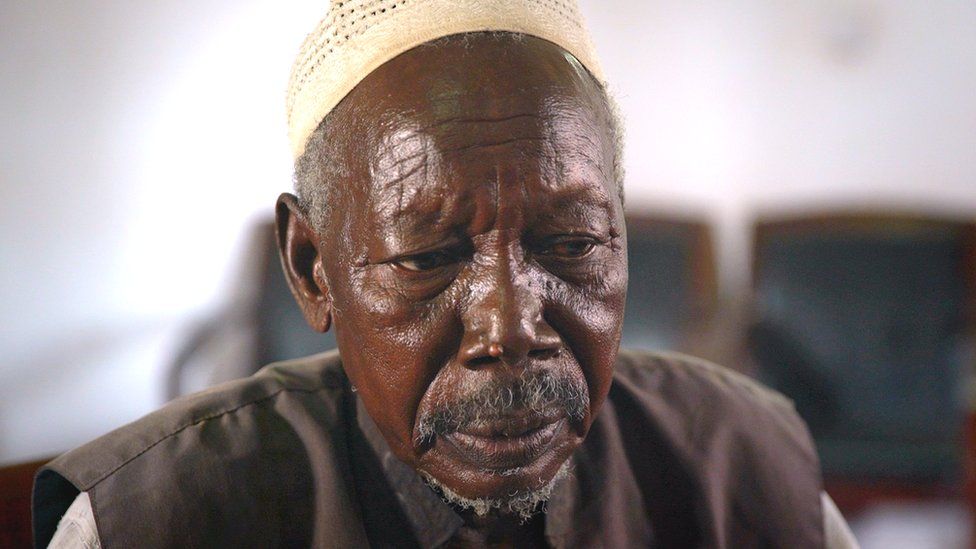
Once again discovery of an unknown animal, in itself a mystery, resolves a paranormal mystery.
Jim Corbett, the famous hunter who spent many years in India, had discovered the churail, the native variant of banshee, as an unknown bird which has a high-pitched, shrill voice. He located this strange nocturnal bird by means of a pair of powerful binoculars in the Kumaon jungles.
The existence of unknown species and varieties of wild animals may thus explain why ghosts are frequently present in jungle lore; why supernatural fear is so ingrained in people who live near the wild! The myths of werewolves and tigers or lions masquerading as human beings are common in Africa and India — the two famous habitats of the fearsome felines.
See: Jim Corbett man-hunter of man-killers
Churail is an Indian/Pakistani Urdu term for a female jinn or witch.
A banshee by any other name.
The churail is also a reference to a female ghost , a woman who dies in childbirth, whose feet point backwards. Reminding us of Baba Yaga as well as Lilith.
The jinn succumbed to Mohamed according to Surat 72 of the Koran. In imitation of the earlier legend of Solomon/Suliman who had control over angels and demons.
The Banshee (IPA: [ˈbæn.ʃi]), from the Irish bean sí ("woman of the sídhe" or "woman of the fairy mound") is a female spirit in Irish mythology, usually seen as an omen of death and a messenger from the Otherworld. Her Scottish counterpart is the Bean Nighe ("washer-woman").
The sídhe are variously believed to be the survivals of pre-Christian Gaelic deities, spirits of nature, or the ancestors. Some Theosophists and Celtic Christians have also referred to the sídhe as "fallen angels". They are commonly referred to in English as "fairies", and the banshee can also be described as a "fairy woman".
Banshee
The banshee in Irish Gælic, is called 'bean sidhe', which means 'supernatural woman'. She is envisioned with a sunken nose, scraggy hair and huge hollow eye sockets. Her eyes are fiery red from continuous weeping. She wears a tattered white sheet flapping around her. She wails outside the door of someone who is about to die, but only for old families. All the best clans have their own private banshee. They are very closely related to the bean-nighe and cointeach.
Churel
Also called churail, this vicious and vengeful ghostlike female vampire found in India is normally the result of a woman who died while pregnant during the 'Devali Festival' or unclean at any time.
Churels
India. Also known as Jakhin/Jakhai/Mukai/Nagulai/Alvantin. Churels are women who died in childbirth, during the Dewali festival. If a woman had been treated badly by her family, she would return to seek vengeance upon them and dry up the blood of the male family members. Such a woman would become a Dakini an associate of Kali and partake in her vampiric activities. If a young man was tempted by churel and ate the food she offered. She would keep him until dawn and return him to his village a grey haired old man. Churels are said to have an awful appearance; possessing pendant breasts, long sharp teeth, thick lips, unkempt hair and a black tongue. A noticeable feature of the woman is that she would have her feet turned backwards. Seeds affect the churels. A woman who had died in childbirth was buried in a special place with red flowers on top of the grave to prevent her coming back from the dead. Prevention can also be achieved if the woman is buried face down or by filling the grave with thorns or stones. Also called a churail.
*Djinni (Arabic, also spelled genie) In the Arabian Nights, lived in a rose-domed city called Shadukiam. The oldest genie, by whom they swear, is named Kashkash. Ampharool is the genie who can teach men the secret of flying, according to a medieval grimmoire called The Book of Power.)
The prevalence, classification and treatment of mental disorders among attenders of native faith healers in rural Pakistan
Background: Although native faith healers are found in all parts of Pakistan, where they practice in harmony with the cultural value system, their practice is poorly understood. This study investigated the prevalence, classification and treatment of mental disorders among attenders at faith healers. Method: The work of faith healers with 139 attenders was observed and recorded. The mental status of attenders was assessed using a two-stage design: screening using the General Health Questionnaire followed by diagnostic interview using the Psychiatric Assessment Schedule. Results: The classification used by faith healers is based on the mystic cause of disorders: saya (27%), jinn possession (16%) or churail (14%). Sixty-one percent of attenders were given a research diagnosis of mental disorder: major depressive episode (24%), generalized anxiety disorder (15%) or epilepsy (9%). There was little agreement between the faith healers' classification and DSM-IIIR diagnosis. Faith healers use powerful techniques of suggestion and cultural psychotherapeutic procedures. Conclusions: Faith healers are a major source of care for people with mental health problems in Pakistan, particularly for women and those with little education. Further research should assess methods of collaboration that will permit people with mental health problems to access effective and culturally appropriate treatment.
SESHADRI, B. I am also interested, are 'churail' the same thing as Jinn ... Churail is a mirpuri style name for jinn, When i was small and i misbehaved they used to say ...
my friend, who i've know since 2nd grade, his mom can see jinn. they have moved about 3 times already because she saw shaytan in that house. my friend tells me that a jinn watches over her and her family. we were playing cricket, i ACCIDENTLY broke his nose with a bat, DO NOT ASK HOW!! ok anyway and afterwards he called home to tell his mom and dad about what happened and his mom said i know that already, the jinn told me( the jinn actually had a name which i dont remember) this happened when we both were in high school in pennsylvania, and our families were in saudia.
In the company of ghosts
| Minakshi Chaudhry's "Ghost Stories of Shimla Hills" spins some eerie phantom yarns, says R.V. SMITH |
Contained in this 139-page book (pardon the misprints) are a host of stories by the author while wandering around the Shimla Hills in 1999. Minakshi was looking for British ghosts but came across several tales of native ghosts too, whose haunts sometimes merged with those of their dead sahibs and sometimes not. She did not meet any bhoot or churail, maybe just a sudden breeze that brushed past the cheek and tingled the spine, but no unearthly form grinning in diabolical glee at the former Indian Express reporter.
Exploring Pakistan’s ‘Haunted Places’
Haunted Places in Pakistan
In partnership with TheShawdolands.net
For more "haunted" locations click here.
Juicee News Daily does not necessarily support or believe in the existence of ghosts. We are sure that some of these may simply be local legends and folklore, but often these legends do spring out of past events. Never trespass on any of these locations. Always get permission to enter
abandonded or private property.
Kalabagh - Punjab - Here a lady who is very fat and with a small lenght. Her hair are too long. She attacks if gazed by someone.
Karachi - 39-k block 6 - P.E.C.H.S. - Sometimes you will see a white light glowing at night.? Also people have reported seeing a very pale women wearing a white dress walk around for about a minute then disappear at about 3:00 in the morning, it has also been said that this lady had been kidnapped and rapped, after she was rapped she was murdered and buried there.
Karachi - Liari - Witnesses report seeing an apparition of a man badly cut and bleeding, when approached, he vanishes.
Lahore - Defense - T Block - Reports of an apparition of a gil in white clothes.
Beautiful girl with feet pointing backwards
One Qari Muhammad Asghar wrote in the Khabrain magazine that once he was passing by a graveyard when a beautiful girl appeared, crying most movingly and begging to be taken home. He agreed to take her but when she fell to the ground and he bent to pick her up he noted that her feet were pointing backward. He ran away but heard the voice of the churail that, had he not been holding a tasbih, she would have eaten him alive.
‘Churail’ in the car
Writing in Khabrain magazine, Jamal Ashraf stated that he was going in a car from Lahore to Daska with a friend when his car was flagged down by a good looking girl on the road. She was beautiful and spoke most charmingly but suddenly the tyre of the car burst and the friends were stranded. The girl suddenly became churail and said that she would eat both of them. The writer began reciting Ayat al-Kursi on which the churail begged him to stop, but since they kept reading the ayat the churail had to run away.
Are ghosts really there????????
‘Ghost Stories of Shimla Hills by Minakshi Choudhary’. Just read some ghost incidents in Shimla as narrated by local residents and visitors there. A churail walking right besides you, an eerie feeling occurring without any reason, you see some figure in the 1st second that disappears in the 2nd, hear some conversations but you don’t see anyone there, some strange looking person calling out your name …..so many more. Do all these things actually happen? Have what the people narrated, their real experiences, their imaginations or is it simply made up? But on second thoughts, why will they make up such stories? Maybe for its sheer excitement. No one knows and I am one of those 'no one'.
Pakistani police have arrested a man accused of murdering his 22-year-old daughter because he said she was possessed by demons.
Police say Mr Arain told them a "churail' (female demon) had possessed his daughter a few days ago and threatened to kill him and his sons.
Technique to kill lantana
By Ravinder Sood
LANTANA, commonly known as “lal phulnu”, “phulbehri”, “panchphuli buti”, “churail buti, etc, is an obnoxious weed growing in waste lands, grasslands, orchards and forest areas. This weed having its origin in South America and Central America has spread to all districts of Himachal Pradesh except Lahaul and Spiti and Kinnaur.

Burma Banshees, "Angels on our Wings," the call of death to the enemy
February 22, 2005
The 80th Fighter Group, some stories and photos
80th Fighter Group (FG) "Burma Banshee" P-40N "Warhawk," 1944. A painting by Richard Groh, presented by Adam Lewis' "Adam's planes." The P-40 was flown in the CBI by the 88th, 89th and 90th Fighter Squadrons.
The Banshee’s Wail and the Huge Night Prowler
The Black Death, a plague which struck in the years 1348-1350 (the time frame of Red Noses), killed a third of the population of Europe in three short years. From Iceland to India, the highly infectious epidemic spread, striking all segments of society, particularly the young. The Black Death was the greatest and most profound natural disaster in recorded human history. Wildly infectious, the plague struck all levels of society, although the young and the poor were hardest hit. Infected persons were usually dead within five days, sometimes in less than a day. Plague victims were commonly seen to have the famed buboes, egg-sized swellings in the groin and armpits which ruptured and festered shortly before death.
The Black Ravens – the collectors of corpses had a difficult and dangerous job during the years of the Black Death. Some wore bird-like masks, the beaks of which were filled with cloth and sweet-smelling herbs to overcome the hellish stench of rampant decomposition. Also called sextons, corpse collectors lived by helping themselves to the belongings of the fallen.
Morgana of the Dark Moon Night
Onyx bird, bold in flight
Raven, come to us now!
Keeper of the sacred well
Where the faerie spirits dwell
Raven, come to us now!
Guardian of the Blackthorn Tree
Home of the feared Banshee
Raven, come to us now!
Teacher of warriors, and of sex,
spells that heal and spells that hex
Raven, come to us now!
Bean Sidhe by the river bed
Washing shrouds of the newly dead
Raven, come to us now!
Twin birds of memory and thought
Who brought the knowledge Odin sought
Raven, come to us now!
Raven with his bag of tricks
Always getting in a fix
Raven, come to us now!
Stalwart guardian of the Land
The sacred bird of mighty Bran
Raven, come to us now!
Wise One of the Second Sight
Who foretells our human plight
Raven, come to us now!
Raven, Oldest of us All
Watch over us and hear our call
Raven, come to us now!
Cry of the Banshee. English lord Vincent Price destroys a witches' temple, with disastrous results, in Gordon Hessler's scream-a-thon. 1970. 92 min.
Bush Stone Curlews are predominantly a nocturnal species hunting and vocalizing of a night. They have a diet consisting of invertebrates (eg. Insects, worms) through to small vertebrates (eg. Mice, small snakes, birds). It is their distinctly mournful cry of a night that has also given them the Aussie slang names of 'Wailing Woman' and 'Banshee Bird'.









